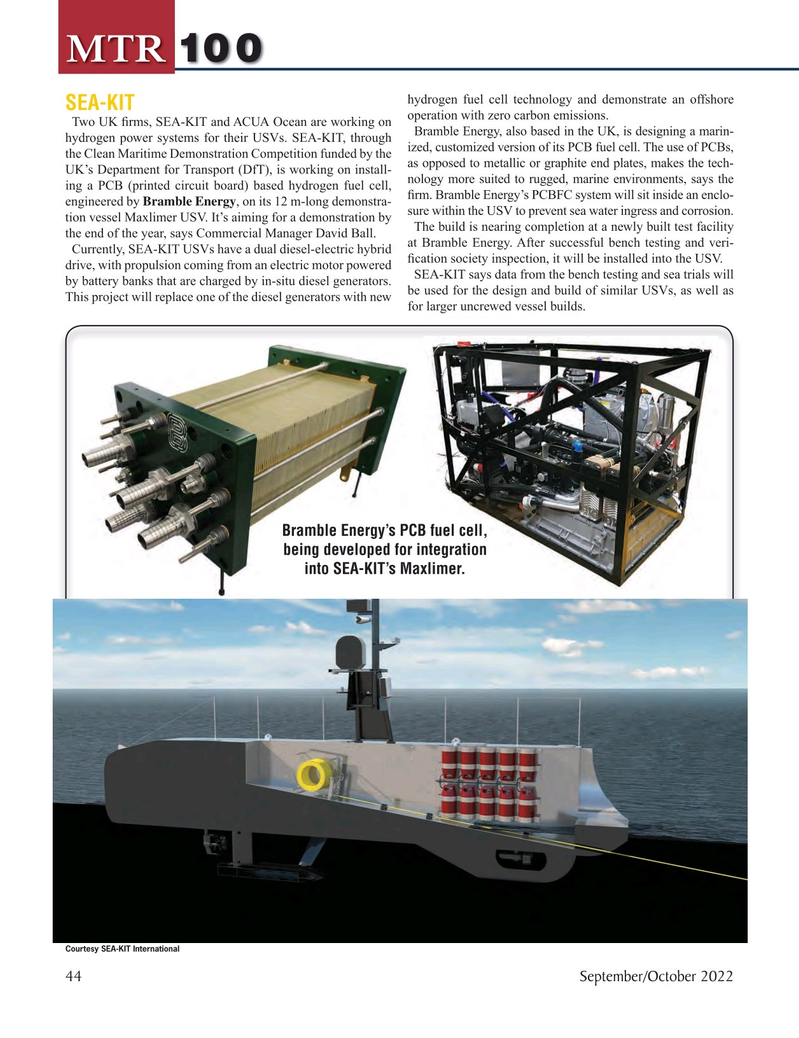
Page 44: of Marine Technology Magazine (September 2022)
Read this page in Pdf, Flash or Html5 edition of September 2022 Marine Technology Magazine
MTR 100 hydrogen fuel cell technology and demonstrate an offshore
SEA-KIT operation with zero carbon emissions.
Two UK ? rms, SEA-KIT and ACUA Ocean are working on
Bramble Energy, also based in the UK, is designing a marin- hydrogen power systems for their USVs. SEA-KIT, through ized, customized version of its PCB fuel cell. The use of PCBs, the Clean Maritime Demonstration Competition funded by the as opposed to metallic or graphite end plates, makes the tech-
UK’s Department for Transport (DfT), is working on install- ing a PCB (printed circuit board) based hydrogen fuel cell, nology more suited to rugged, marine environments, says the ? rm. Bramble Energy’s PCBFC system will sit inside an enclo- engineered by Bramble Energy, on its 12 m-long demonstra- sure within the USV to prevent sea water ingress and corrosion.
tion vessel Maxlimer USV. It’s aiming for a demonstration by
The build is nearing completion at a newly built test facility the end of the year, says Commercial Manager David Ball. at Bramble Energy. After successful bench testing and veri-
Currently, SEA-KIT USVs have a dual diesel-electric hybrid ? cation society inspection, it will be installed into the USV. drive, with propulsion coming from an electric motor powered
SEA-KIT says data from the bench testing and sea trials will by battery banks that are charged by in-situ diesel generators. be used for the design and build of similar USVs, as well as
This project will replace one of the diesel generators with new for larger uncrewed vessel builds.
Bramble Energy’s PCB fuel cell, being developed for integration into SEA-KIT’s Maxlimer.
Courtesy SEA-KIT International 44 September/October 2022
MTR #7 (34-49).indd 44 10/3/2022 8:35:03 AM

 43
43

 45
45
